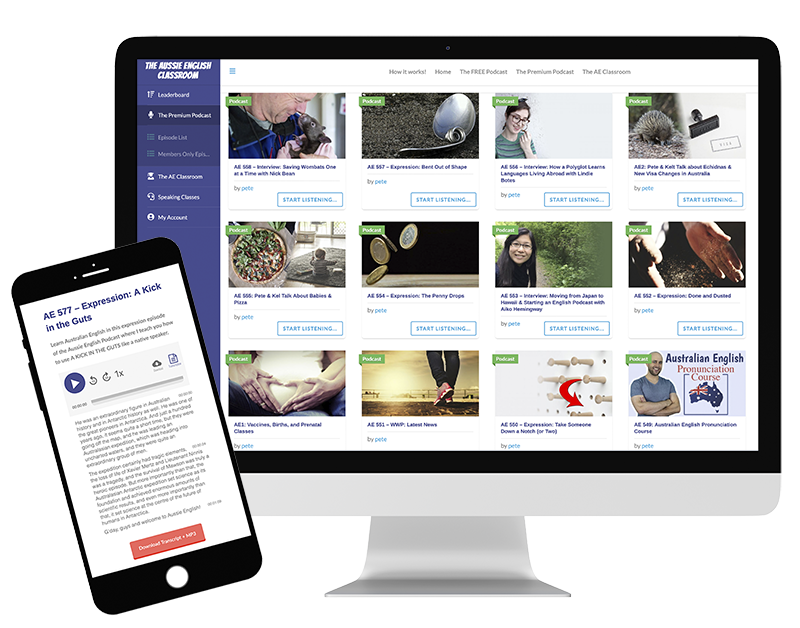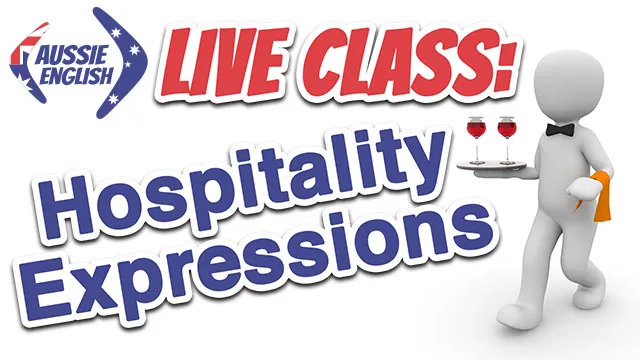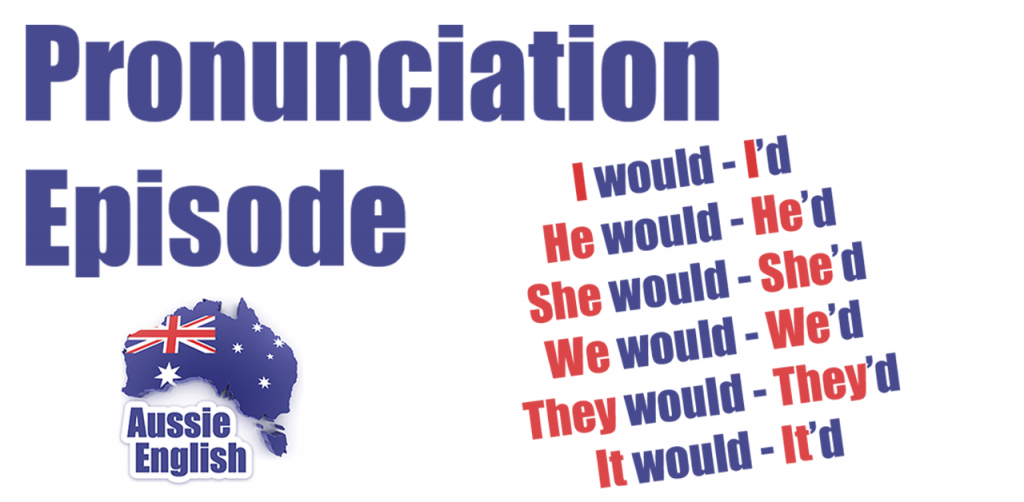Pronunciation: Contracting WOULD onto THIS, THAT, THESE & THOSE
Learn Australian English in this Pronunciation episode of Aussie English where I teach you how contracting WOULD onto THIS, THAT, THESE and THOSE is easy.
Pronunciation: Contracting WOULD onto THIS, THAT, THESE & THOSE
Hey guys! Welcome to this episode of Aussie English. In this episode, as you will no doubt know, we’re going to be working on contracting the auxiliary verb WOULD onto several demonstrative pronouns. And without getting too crazy grammar wise, demonstrative pronouns are just THIS, THAT in the singular form and THESE and THOSE in the plural form.
As, I’ve said before, WOULD is an auxiliary verb that can be used in several different ways in English whether it’s the Present Tense “I would like to do something”, whether it’s the (Conditional*) Past Tense, “I would have done something.”, or whether it’s that repeated past tense, “When I was young I would always get the bus to school.”
It can be used in a bunch of different ways but you’ll learn that with time. Don’t worry too much about perfecting these things. Just keep listening, keep practicing, keep speaking, and keep improving.
So, in this episode, like the last episode, we’ll just focus on WOULD in the Conditional Present Tense because this is probably the most common way that you guys are going to be using this.
I would go
I would see
I would be
Or
This would go
This would be
This would see
If we’re using DEMONSTRATIVE PRONOUNS.
And so, we’ll just start with a basic listen and repeat exercise guys with these four demonstrative pronouns. I’ll repeat each one of them five times and I’ll say the uncontracted form first and the contracted for second.
So, let’s get started.
Listen and repeat:
This would – This’d x 5
That would – That’d x 5
These would – These’d x 5
Those would – Those’d x 5
*Note: these contractions are spoken and not written unless in verb informal situations like messaging friends on social media or via text message on your phone. THIS’D, THAT’D, THESE’D and THOSE’D would never be written formally.
So, as we’ve gone over in previous episode guys, I’ve written each of these sentences for this substitution exercise out with a noun added in brackets. So, the noun is added straight after the demonstrative pronoun. So, if you read the transcript you will see THIS and then a noun. And I’ve done this so that you guys can better imagine what I’m talking about, because the whole reason that we use THIS, THAT, THESE and THOSE, the demonstrative pronouns, in English is because whoever it is that is having this conversation has agreed or has obviously made it understood what they’re talking about. So, if I’m talking about a cat and it’s THIS cat right in front of me I can just ditch the noun “cat” and just start saying THIS, THIS, THIS, THIS. So, I’m not constantly repeating myself. And so, all of these sentences, I’ve obviously dropped the noun, I’ve removed the noun, so that you’re contracting the word WOULD directly onto the demonstrative pronoun. So, instead of, for example, saying THIS DRESS WOULD and saying THIS DRESS’D, you’re practicing saying THIS WOULD and THIS’D.
Anyway, long story short, if you don’t understand these sentences from just listening go and read the transcript and in brackets after each one of these demonstrative pronouns is a noun to give you better context for what each of these sentences means. So, that you can imagine in your head what I’m talking about as I’m speaking.
And so, let’s just dive into it guys. Let’s get started, and let’s practice improving your contraction skills.
Substitution exercise:
- This [dress] would look good on you.
___________________________________________________
- That [car] would be incredibly fast.
___________________________________________________
- These [shoes] would help you run faster.
___________________________________________________
- Those [dogs] would have to be ours.
___________________________________________________
- This [house] would cost a fortune.
___________________________________________________
- That [idea] would never work.
___________________________________________________
- These [computers] would work if they were plugged in.
___________________________________________________
- Those [books] would change your life if you read them.
___________________________________________________
- This [wallet] would be mine.
___________________________________________________
- That [woman] would be his wife.
___________________________________________________
- I don’t think these [pants] would fit me.
___________________________________________________
- See if those [earrings] would look better.
___________________________________________________
- This [news] would change everything.
___________________________________________________
- Knowing that [secret] would devastate her.
___________________________________________________
- Swallowing these [pills] would kill you.
___________________________________________________
- Those [chickens] would run away if they could.
___________________________________________________
See all answers in the Answer Section of the PDF transcript.
And so, guys, I know that I’m saying these sentences in a sort of slow and weird way. I’m emphasising the contractions because when I speak as a native quite often these contractions are very subtle, and I’ve been chatting to a few people I’ve been giving lessons to and who have listened to the podcast, and a few of them have said that it’s incredibly difficult to hear when I’m making these contractions. So, I thought that I would add in a few lessons here where I really really try and emphasise that “ed” sound after a lot of these words. I’m not going to do it in every single one, because I think that just one or two lessons here and there will give you the idea. But yeah, it’s one of those things where when you’re practicing I really recommend overdoing it overemphasising it, you know, saying it where it does sound strange but that you’re doing it correctly with perfect technique, if you will, if you want to talk technique wise. And so, when you speak quickly, it’ll just be natural and it’ll be really subtle.
So, for example here, if I was to read the first sentence again, “This would look good one you” and say, we’re talking about a dress. So, “This dress would look good on you”. If I was to say, “This would look good on you” but contracted, and I said it quickly like a native, I’d say, “This’d look good on you”, “This’d look good on you”. But I feel that if I say these sentences too quickly you’re going to really miss what I’m trying to get at, and the most important thing in all of these is showing you guys how to really work that contraction of these words and pronounce them correctly so that when you do it slowly you get it right, and when you speed up and start speaking more quickly as you get better at this you’ll change it and it’ll become more and more and more subtle. So, you’ll get better at it that way.
Anyway, I won’t waffle on too much, I won’t talk too much, I just wanted to sort of go over why in this episode I am talking a little more slowly and emphasising the “ed” sound. THIS’D, THAT’D, THESE’D, THOSE’D.
And just now, I just thought, as one way of practicing these things, whatever the contraction is that you’re working (on), if you really really want to practice it well and just do reps (i.e. repetitions) on your own in your bedroom, you know, just repeat the thing multiple times, make them bounce. Make them bounce off that last syllable of the word. So, you would’ve heard me THIS’D instead of THIS’D. Really practicing that bouncing, the THIS’D, THAT’D, THESE’D, THOSE’D. And it will probably work with any of these contractions.
Anyway, guys, I’ll leave it there and I’ll see you guys in the next episode. All the best!
Here's what you get when you sign up!
- Read while you listen using the Premium Podcast player.
- Understand every word in every episode.
- Download all PDF transcripts and MP3s for 600+ episodes.
- Get access to bonus member-only episodes.












Responses